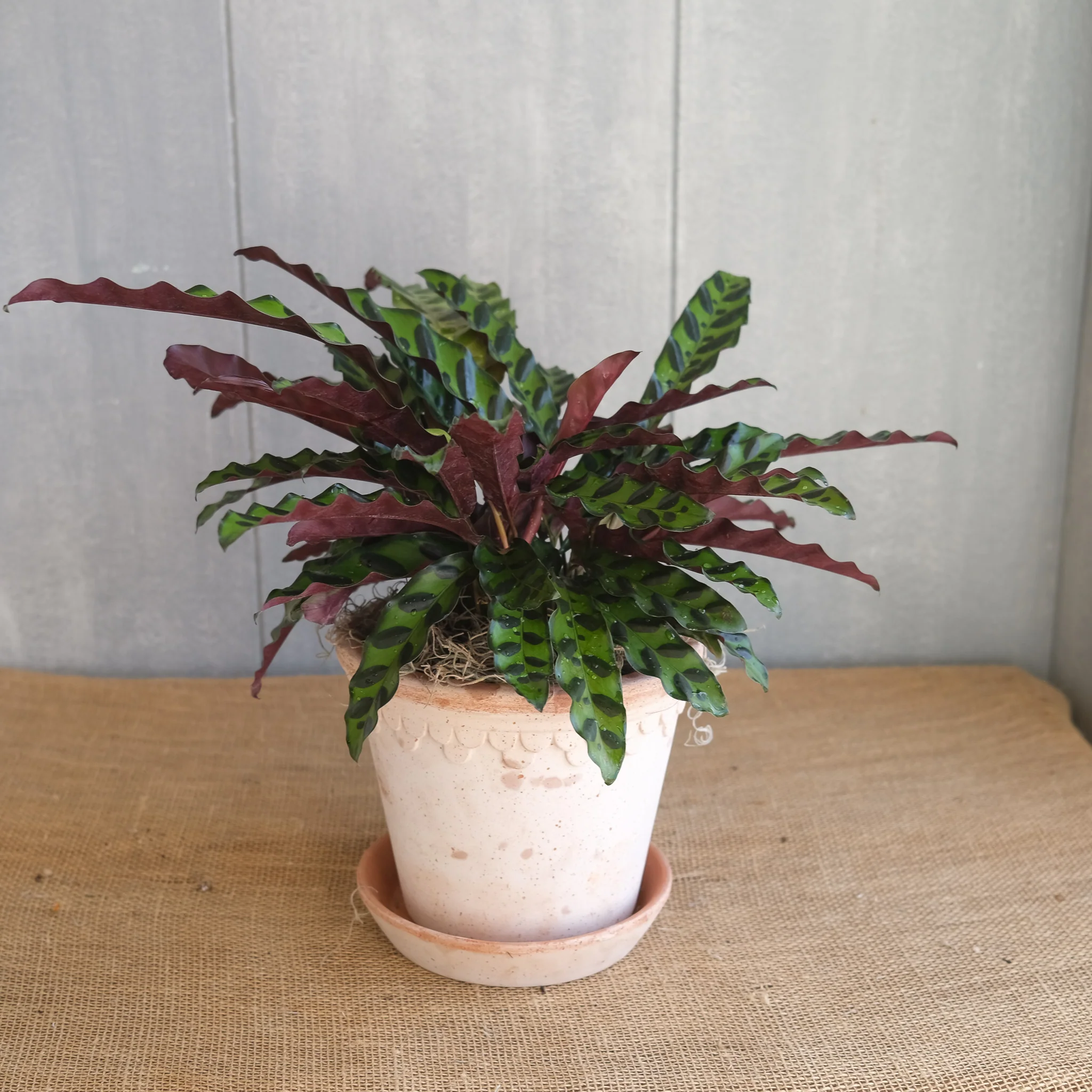Rattlesnake Plant Care Guide
Learn how to care for your Calathea lancifolia, a stunning tropical plant with wavy, patterned leaves
Rattlesnake Plant Care Guide
The Rattlesnake Plant (Calathea lancifolia) is a striking tropical plant known for its long, wavy leaves with dark green spots and purple undersides. Native to the Brazilian rainforest, this plant adds a dramatic touch to any indoor space with its unique foliage and movement throughout the day.

Light Requirements
Thrives in medium to bright, indirect light. Direct sunlight can fade the beautiful leaf patterns and cause leaf burn. It can tolerate lower light conditions but may grow more slowly and lose some vibrancy in its leaf patterns.
Watering Schedule
Keep the soil consistently moist but not waterlogged. Water when the top inch of soil feels dry. Use filtered or distilled water, as Calatheas are sensitive to chemicals in tap water.
Signs of Improper Watering
- Overwatering: Yellow leaves, root rot
- Underwatering: Curling leaves, brown edges
- Water quality issues: Brown leaf tips, faded coloration
Humidity & Temperature
Prefers high humidity (60-70%) and temperatures between 65-80°F (18-27°C). Mist regularly or use a humidifier, especially in dry climates or during winter months.
Soil & Fertilizing
Use a well-draining, peat-based potting mix. Feed every 4-6 weeks during the growing season (spring and summer) with a diluted, balanced liquid fertilizer.
Unique Features
- Prayer Plant Movement: Leaves move throughout the day, folding up at night
- Air Purifying: Excellent at removing toxins from indoor air
- Pet Friendly: Non-toxic to cats and dogs
Common Issues
Brown Leaf Tips: Usually caused by low humidity or chemicals in water Spider Mites: Watch for fine webbing on leaves Leaf Curling: Often a sign of underwatering or low humidity
Pro Tips
- Rotate the plant occasionally for even growth
- Wipe leaves with a damp cloth to remove dust
- Group with other plants to create a humid microclimate
- Avoid cold drafts and sudden temperature changes
Fun Fact
The Rattlesnake Plant gets its name from the distinctive pattern on its leaves that resembles the skin of a rattlesnake. In its natural habitat, this pattern helps the plant blend into the dappled light of the forest floor.
Exotica Botanica – your trusted source for rare houseplant care guides, tips, and tools.
